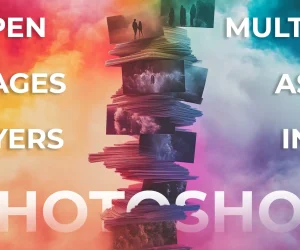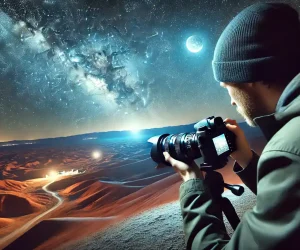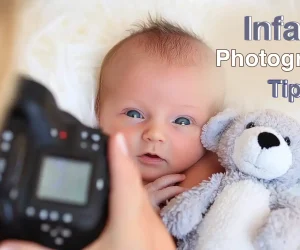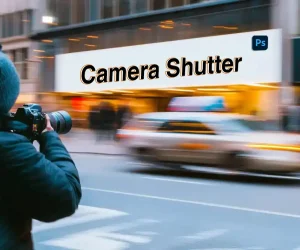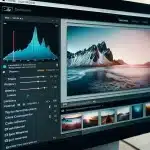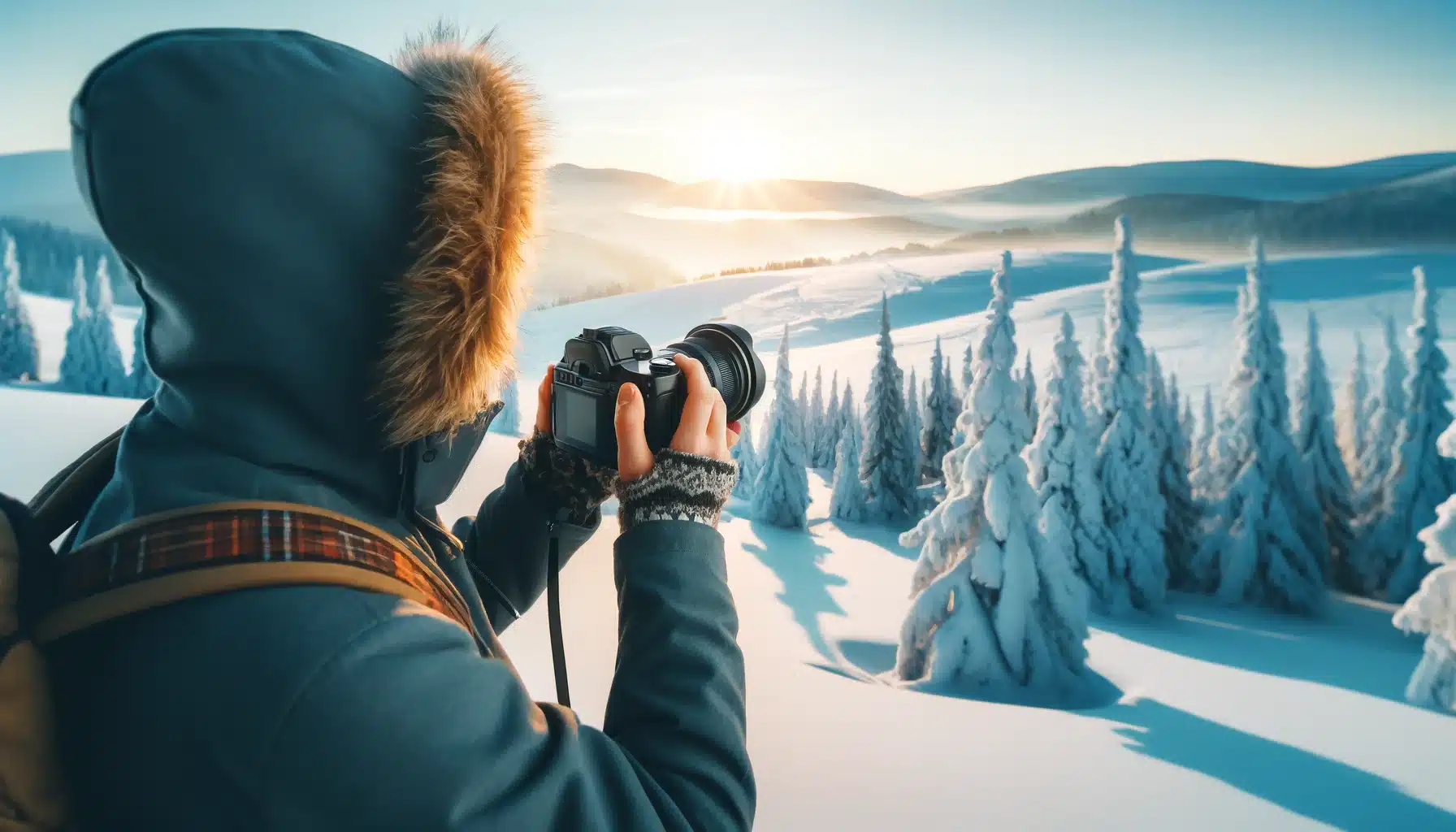
Introduction to Tips for Snow Photography
Capturing snow can be a magical experience. Snow-covered landscapes create stunning scenes, but many beginner photographers don’t know the essential tips for snow photography. It’s important to stay safe and understand the right techniques to get those fairy-tale frozen photographs. In this article, you’ll learn valuable and handy snowfall photography tips.
We’ll cover everything you need to know about snow photography. From the right supplies and camera configurations to creative ideas and protecting your equipment to get unique shots. Whether you’re new or experienced, you’ll find useful information here. So, let’s dive in.
Table of Contents
Essential Gear for Snow Scene Photography
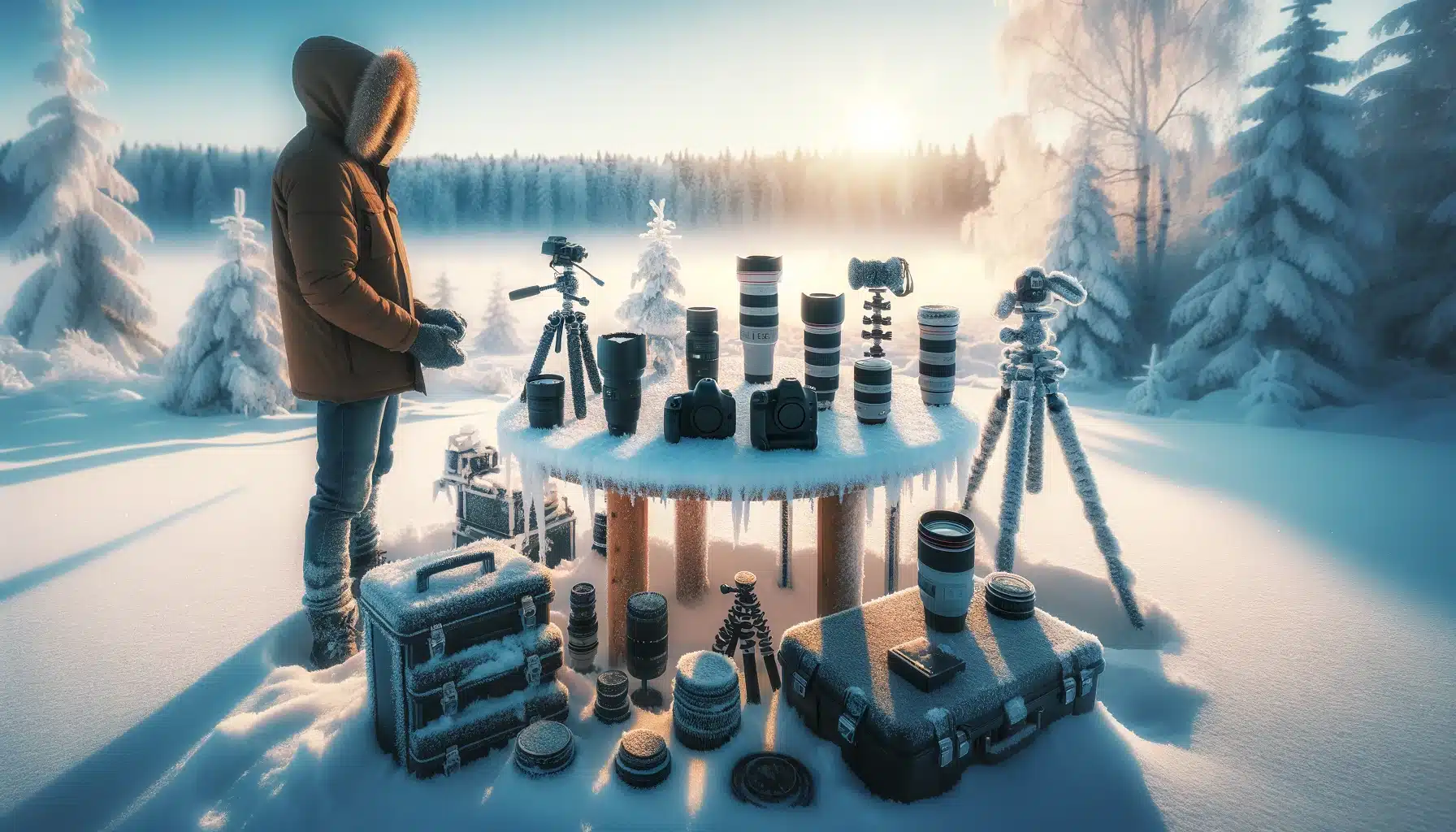
Having the right photographic tools is one of the ideal tips for snow photography. You need to be ready for cold and wet environments. Having the right tools help you capture beautiful images while keeping your camera and other equipment safe.
Weatherproof Camera
A weatherproof camera is essential for frozen vistas. Snow can melt and get your camera wet. A weather-sealed camera can handle freezing temperatures and moisture. A camera that resists harsh weather protects internal electronics from moisture damage, ensuring longer use during wintertime vistas adventures.
Sturdy Tripod
A sturdy tripod is a must-have for frozen vistas. It keeps your camera steady for clear shots. Snow environments can be slippery, so a tripod with good grip is crucial. Look for one with non-slip feet. This helps when setting up on icy surfaces. A reliable tripod also allows for long exposure shots, which can capture the serene movement of falling snow or the glow of snow-covered landscapes at night.
Extra Batteries
During winter season batteries drain faster. Always carry extra batteries when you go out to shoot. Put them in a warmer pocket close to your body. This helps them last longer. When one battery dies, switch it with the spare one. Having spares ensures you don’t miss any magical moments. Rechargeable batteries are a good investment, as they can be used repeatedly throughout the winter season.
Lens Protection Tips for Snow Photography
Protecting your camera is crucial. Snowflakes can land on your equipment and melt, causing spots and potential damage. Use a camera hood to shield your lens types. A UV filter can also help protect your lens glass. It’s easier to clean a filter than the camera itself. This layer of protection prevents scratches and keeps your photographs clear.
Insulated Camera Bag
An insulated camera bag keeps your equipment safe from the cold. It also protects your camera when moving from cold to hot places. This prevents condensation inside your camera. Look for a bag with padded compartments for extra protection. A high-quality bag also provides organized space for all your accessories, such as batteries, filters, and cleaning kits.
Polarizing Filter
A polarizing filter helps you capture the true beauty of the snow-covered vista while reducing glare and enhancing colors. It also makes the sky look more vibrant. The filter works by blocking out certain illumination waves, reducing reflections and increasing contrast.
Waterproof Clothing
Wearing the right clothing is just as important as having the right camera. Dress in waterproof layers to stay dry. Insulated gloves, hats and scarves are also important for keeping your hand, head, and neck warm.
Camera and Lens Recommendation and Tips for Snow Photography
When taking photographs in the snow, it’s important to have the right camera and lens. This table will help you understand the differences. Here are some snowfall photography tips on getting the top equipment for your needs.
| Feature | Weatherproof Camera | Regular Camera | Wide-Angle Lens | Telephoto Lens |
|---|---|---|---|---|
| Protection | Sealed against snow and moisture | Needs extra protection | Good for landscapes | Good for distant subjects |
| Performance in Winters | Works well in freezing temperatures | May have reduced performance | Captures wide scenes | Captures faraway details |
| Battery Life | Longer battery life in cold | Battery drains faster | Allows more in the frame | Allows close-up shots from afar |
| Durability | Built for tough scenarios | More delicate | Durable, less fragile | Usually heavier and longer |
| Cost | Generally more expensive | Usually cheaper | Mid-range price | Can be expensive |
| Weight | Heavier due to extra protection | Lighter, easier to carry | Lightweight | Heavier, requires support |
| Image Quality | High quality in harsh environments | High quality in normal situations | Excellent for broad views | Excellent for details |
| Versatility | Suitable for various seasons | Limited to favorable situations | Great for wide shots | Great for wildlife and sports |
| Ease of Use | Easy to handle with gloves | Harder to handle | Simple controls | More complex controls |
| Lens Compatibility | Compatible with all weatherproof lenses | Compatible with all standard lenses | Works well with most cameras | Works well with most cameras |
Optimal Camera Settings and Tips for Snow Photography
Photographing stunning snow scenes, you need to fine-tune your camera configurations. Snow’s high reflectivity can confuse your camera’s automatic settings.
Adjusting ISO
ISO controls how sensitive your camera is to brightness. In snow, you want to use a low ISO, like 100 or 200. This keeps your shots clear and reduces noise. Higher ISO can make your shots look grainy, especially in very reflective snow. If it’s darker, you might need to increase ISO a bit, but try to keep it as low as possible for the clearest results.
Using Exposure Compensation
Snow can trick your camera’s meter and make your photographs look too dark. Use exposure compensation to make them brighter. Start with +1 or +2 to see if that makes the snow look right. This setting helps show the true beauty of the environment. You can adjust it more if needed until you get the look you want.
Setting the Shutter Duration
Shutter speed controls how long your camera’s sensor is exposed to light. For falling snow, a fast shutter duration like 1/500th of a second will freeze the snowflakes. If you want to show the movement of the snow, use a slower duration, like 1/30th of a second. Experiment with different durations to see what you like most.
Right Aperture Tips for Snow Photography
Aperture controls how much brightness enters the camera and affects the depth of field. For sharp landscapes, use a small aperture like f/8 or f/11. This keeps everything in focus, from the foreground to the background. If you want a softer background, use a larger aperture like f/2.8. This makes the subject stand out against the snow-white background.
Using RAW Format
Shoot in RAW format if your camera allows it. RAW files save all the details of your pictures, which makes editing easier. You can make customizations like white balance and exposure more freely without losing quality. This is especially helpful in tricky snow scenes where you might need to make big adjustments.
Protecting Your Camera and Kit in Cold Conditions
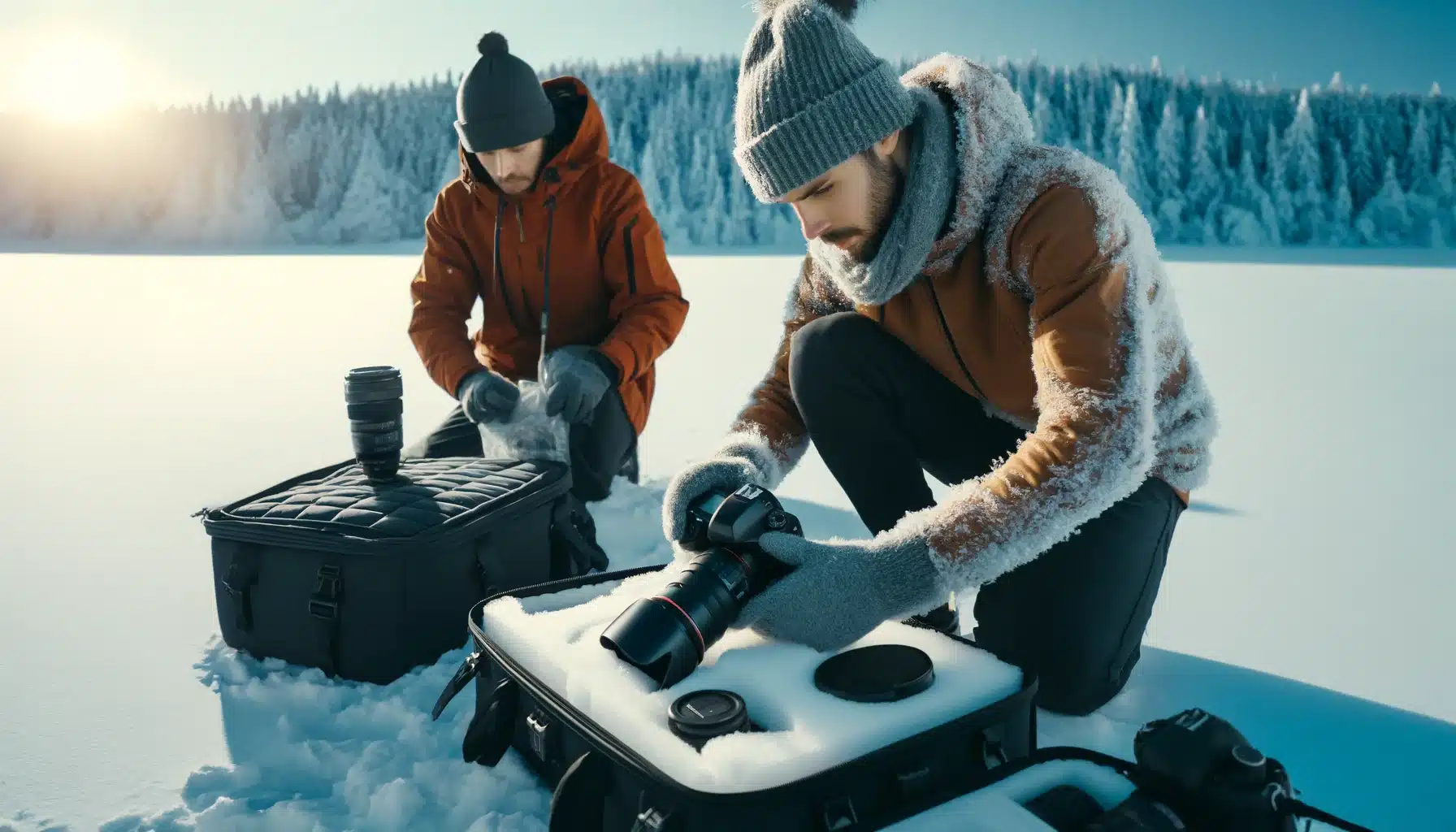
Taking care of your camera is one of the most important tips for snow photography. Properly managing your equipment ensures it works well and lasts longer.
| Aspect | Proper Care | Incorrect Care |
|---|---|---|
| Battery Life | Put spare batteries in a pocket close to your body. Icy temperatures drain batteries quickly. | Leave batteries exposed to the chilly air. They will lose power faster. |
| Condensation Prevention | Place your camera in a sealed plastic bag before bringing it inside. This allows it to heat up slowly and prevents moisture build-up. | Move your camera directly from cold to a warmer room. This causes condensation inside. |
| Equipment Protection | Use insulated bags or covers designed for protecting accessories in harsh environments. | Use regular bags without insulation. They won’t protect your camera from the elements. |
| Cleaning | Use a soft brush or blower to gently remove snow from your equipment. Avoid wiping with your hands. | Wipe snow off directly with your hands. This can smear moisture and dirt onto your camera. |
| Storage | Store your camera in a dry, cool place. Use silica gel packs to absorb any moisture. | Store in damp or fluctuating temperatures. This can lead to mold and damage. |
Snow Photography Techniques for Capturing Stunning Photos
Capturing stunning snow photographs requires some special techniques. Snow can be tricky to photograph because it reflects a lot of light. Here are some tips for snow photography to help you take beautiful photographs.
Adjusting White Balance
Snow often appears blue in photographs. This is because cameras can get confused by the glowing white snow. Adjusting the white balance helps correct this. Set your camera to a “daylight” or “cloudy” mode to make the snow look whiter. If your camera supports shooting in RAW, use it. This format lets you adjust the white balance later during editing.
Using Manual Focus
Snow scenes can confuse your camera’s autofocus. The shining snow and reflections make it hard for the camera to focus correctly. Switch to manual focal setting for sharper images. Look for a point of contrast to set your focus. For example, use a tree or a person in the scene. This helps ensure your main subject is clear and sharp.
Pro Tip: Learn how to use manual mode to make your workflow even more efficient.
Experimenting with Exposure
Snow can trick your camera’s light meter. This often results in underexposed photographs, making the snow look gray. Increase your exposure slightly to make the snow shining and white. A good starting point is to set the exposure compensation to +1 or +2. This adjustment helps you capture the true beauty of the snow-capped vistas.
Finding the Right Composition
Composition is key in snow-covered landscapes. Look for natural lines that lead the viewer’s eye through the picture. A path, a row of trees, or a fence can add depth and interest. Place your main subject off-center to make the composition more dynamic. This technique, known as the rule of thirds, makes your photographs more engaging.
Embracing Overcast Days
Shining, sunny days aren’t always the ideal for snow photography. Overcast days can be great too. The clouds act as a natural diffuser, softening the light. This helps avoid harsh shadows and blown-out highlights. Overcast lighting is perfect for capturing the subtle details and textures of the snow.
Filters Tips for Snow Photography
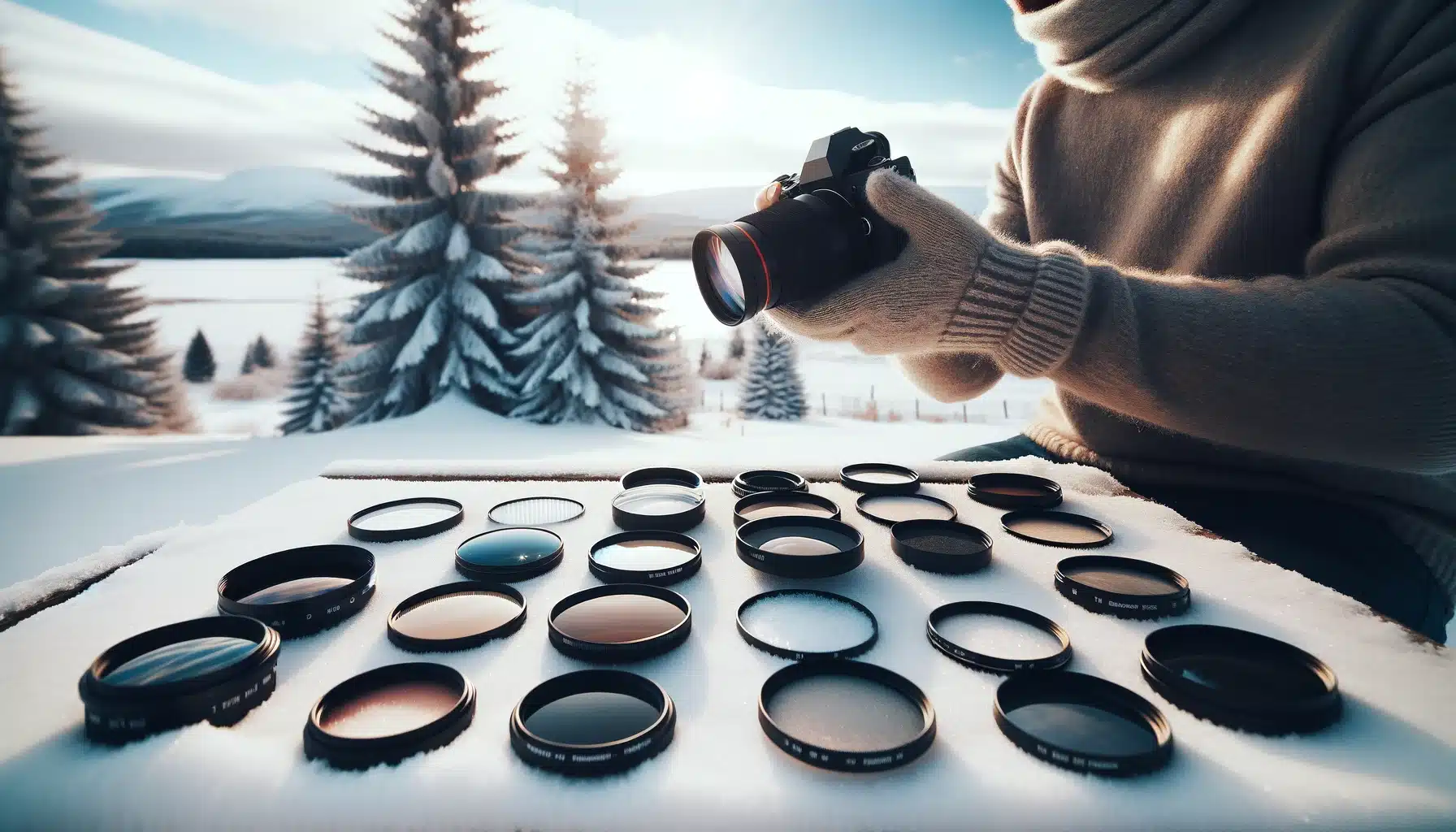
Filters are important tools for snow photography. They help manage the intense reflections and enhance the colors in your shots. Here are some snowfall photography tips on using filters to improve your winter shots.
Polarizing Filters
A polarizing filter is very useful in snow filled environments. It reduces glare from the snow and helps bring out the natural colors. For example, it can make the sky look deeper and the snow appear more vibrant. This filter also helps reduce reflections on water or ice, making your photographs clearer and more detailed. By rotating the filter, you can control the effect and see the difference instantly.
Neutral Density (ND) Filters
Neutral Density filters are great for controlling the amount of glare entering your camera. The reflections can be overwhelming. An ND filter helps manage this by reducing the overall brightness. This is especially useful for long exposure shots, where you want to photograph the movement of the environment without overexposing the shot. ND filters come in different strengths, allowing you to choose how much glare you want to block out.
UV Filters
UV filters protect your camera while also improving your shots. They block ultraviolet rays, which can sometimes cause a hazy effect in your photographs. Although digital cameras are less sensitive to UV lighting than film cameras, using a UV filter can still improve clarity and sharpness. Additionally, this filter provides an extra layer of protection against snow, dust, and minor impacts.
Understanding Light and Color in Snow Photography
To take amazing wintry shots, you need to understand how light and color work together. Snow reflects sunlight in a way that can make your shots challenging. Here are some tips for snow photography to help you manage these elements effectively and achieve stunning results.
Natural Illumination
Snow acts like a giant mirror, bouncing sunlight in all directions. This can make your photographs look too bright or too dark. Early morning and late afternoon are ideal times for taking snow photographs because the sun is lower in the sky, giving a softer glow. The golden hour, just after sunrise or before sunset, adds a magical touch to your shots. On overcast days, the glow is diffused, reducing harsh shadows and giving a softer, more even illumination.
Artificial Illumination
Artificial sources can also enhance wintertime vistas. Streetlights, holiday lights, and even car headlights can add interesting elements to your shots. For example, streetlights can cast a soft glow on the snow, creating a cozy atmosphere in your photographs. Holiday lights add color and sparkle, making your shots more festive. Use these sources to add depth and interest to your wintry shots.
Color in Snow Photography
Color is another important aspect. Snow is often perceived as just white, but it can take on many hues depending on the time of day and lighting. Early in the morning, snow may have a azure tint due to the way sunlight scatters. During sunset, it can look pink or orange. To enhance these colors, consider using a polarizing filter. This filter helps reduce glare and makes the colors more vivid. When editing your photographs, you can also modify the color temperature to bring out these subtle tones.
Ideal Times and Locations Tips for Snow Photography
Finding the right time and place is key for taking professional-looking wintry shots. Whether it’s early morning glow or the serene beauty of a forest, each moment and place offers something unique. Here are some snowfall photography recommendations to help you choose the perfect moments and spots.
| Aspect | Early Morning | Late Afternoon | Forests and Parks | Mountain Areas |
|---|---|---|---|---|
| Illumination | Soft, golden glow; fewer shadows | Warmer, golden tones; long shadows | Gentle, filtered sunlight through trees | Clear air; stunning panoramic views |
| Atmosphere | Calm and quiet; fresh snow undisturbed | Tranquil with beautiful sunset colors | Peaceful; natural elements like trees and animals | Majestic; often with breathtaking snow-capped peaks |
| Foot Traffic | Minimal, fewer disturbances | Minimal, fewer disturbances | Varies; usually quiet in the morning | Can be busy; less crowded early or late in the day |
| Temperature | Coldest part of the day, dress warmly | Warmer than morning but still chilly | Generally sheltered from wind | Can be very cold and windy |
| Unique Features | Sparkling, pristine snow; animal tracks | Beautiful shadows and colors of sunset | Snow-covered trees; quiet paths | Dramatic landscapes; potential for avalanches |
Cool Ideas and Recommendations for Snowy Landscape Photographs
Photographing winter scenes can be enchanting and requires cool tricks and ideas. Here are some snowfall photography tips to help you take stunning shots of frozen landscapes.
Using Natural Elements
Incorporate natural elements like trees, mountains, and water. These features add variety and structure to your photographs. For instance, snow-covered trees can frame your shot beautifully. Mountains in the background produce a majestic feel. Frozen lakes or rivers add a unique touch. Including these elements helps to tell a story and adds context to your winter landscapes.
Creating a Sense of Scale
Include objects or people to give a sense of scale. This helps the viewer understand the vastness of the vista. A small figure against a large mountain or forest can show how big and impressive the site is. It also adds a human element, making the picture more relatable.
Using Leading Lines
Leading lines guide the viewer’s eyes through the photograph. Look for paths, rivers, or even shadows that can act as lines directing attention to the main subject. This technique adds depth and perspective to your shots, making them more interesting and engaging.
Playing with Shadows
Shadows can add texture and dimension to your frozen landscapes. In the early morning or late afternoon, shadows are longer and more defined. Use them to highlight patterns in the snow or to form a sense of drama in your photos. Shadows can turn a simple scene into a captivating masterpiece.
Creative Snow Photography Ideas
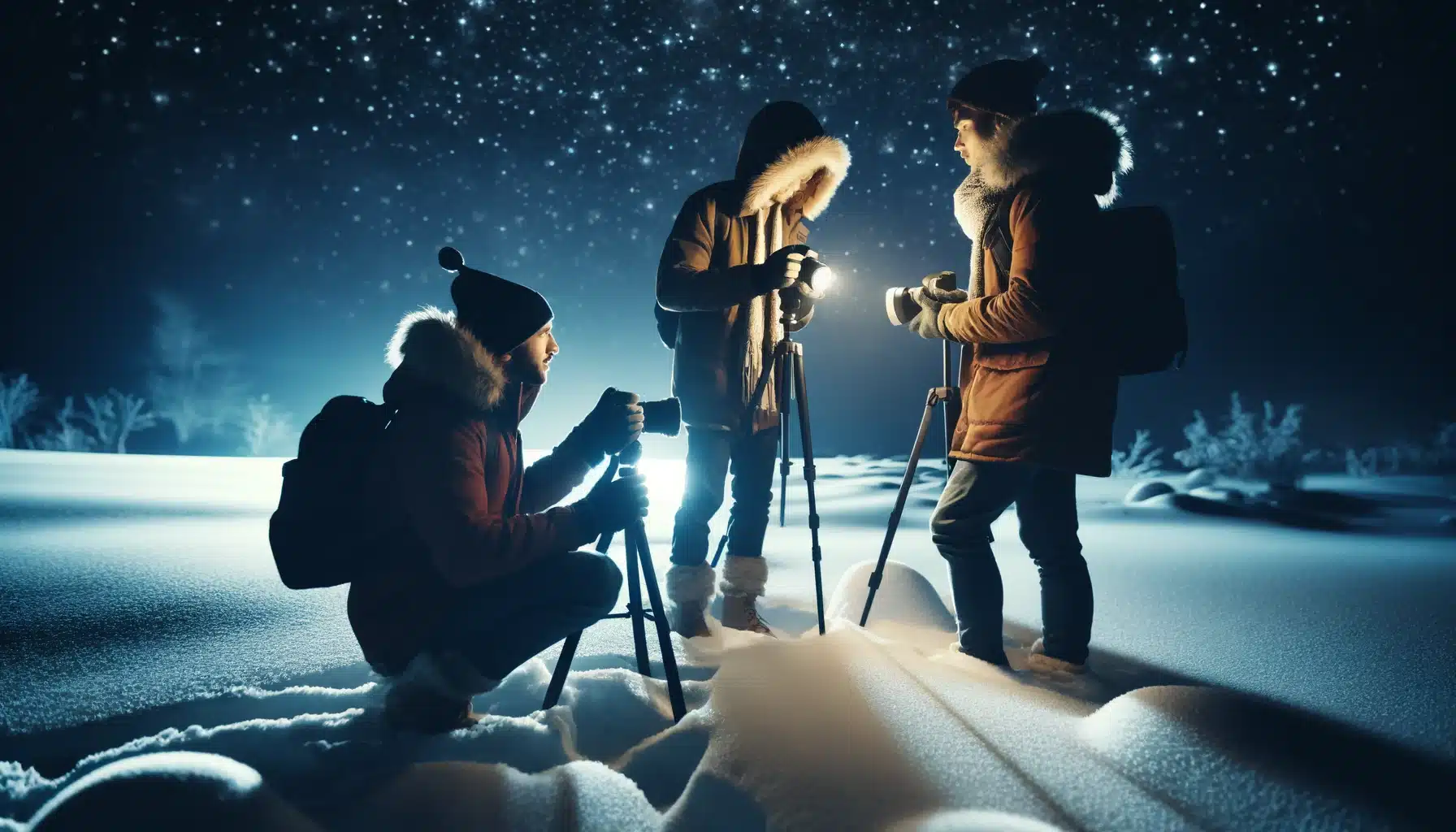
Exploring creative ideas for wintry shots can make your winter shots unique and captivating. Here are some tips for snow photography spark your imagination and help you think outside the box.
Using Reflections
Reflections in ice or puddles can add an artistic touch to your snow photographs. Look for spots where the snow has melted slightly, creating reflective surfaces. Photograph the reflection of trees, mountains, or people in these natural mirrors. This adds depth and interest to your shots, making them more visually appealing.
Playing with Perspective
Change your perspective to make your snow photographs stand out. Try shooting from low angles to make the snow-covered ground look expansive and dramatic. Get close to the ground to get the texture of the snow. You can also try shooting from a higher vantage point, like a hill or a building, to get a bird’s-eye view of the frozen scene.
Incorporating Movement
Add a sense of motion to your wintry shots by capturing moving subjects. For example, photograph people skiing, snowboarding, or sledding. The blur of their movement against the stillness of the snow creates a dynamic and exciting photo. You can also photograph animals playing or running in the snow, adding life and energy to your shots.
Creating Abstract Shots
Look for patterns and textures in the snow to create abstract images. The way snow drifts, the patterns of frost on a window, or the texture of snow-covered branches can make for beautiful, abstract compositions. Don’t forget these details to capture the essence of winter in a unique and artistic way.
Shooting at Night Tips for Snow Photography
Nighttime imagery is always magical, even in snow. The snow reflects any available light, such as streetlights or moonlight, creating a soft, glowing effect. Use a tripod and a long exposure to frame the serene beauty of an icy night. Look for interesting shadows and highlights to add depth and dimension to your shots.
Post-Processing Tips for Snow Photography
Using a powerful photo editing software is an essential part of wintertime imagery. It enhances the beauty of your photographs and brings out the ideal in them. Use these post-processing snowfall photography tips to produce stunning winter photographs that show the magic of the season.
Adding Effects
Add creative effects to give your wintertime photographs a unique flair. Try adding a subtle glow to enhance the magical feel of the snow. You can also experiment with black and white to give your shots a classic, timeless look. Adding effects can transform your photographs into artistic expressions.
Reducing Noise Tips for Snow Photography
High ISO configurations can introduce noise in your images. Use noise reduction tools in your editing software such as Adobe Photoshop, to clean up the image. Be careful not to overdo it, as too much noise reduction can make the photograph look soft. Aim for a clear, crisp look while preserving as much detail as possible.
Sharpening
Sharpening helps to bring out details in your snow images. Use the sharpening tool to make the edges crisp. Be gentle with this tool to avoid creating harsh lines. The goal is to enhance the details subtly without making the photograph look unnatural.
Using Filters
Apply smart filters to give your wintertime photographs a unique look. Vignette filters can add a soft edge, drawing attention to the center of the photo. Color filters can enhance the overall mood. Experiment with different filters to see what works ideal for your shot.
Enhancing Colors
Snow reflects colors around it. Use color correction tools to bring out these colors. Set the temperature to remove any unwanted azure or yellow tones. Enhance the natural colors of the environment to make the picture look vibrant. For example, if the snow has a navy tint, enhance to make it look more natural.
Removing Unwanted Elements
Snow scenes can sometimes include distracting elements like footprints or debris. Use the clone tool to remove these distractions. This keeps an eye on the main subject. Clean, undisturbed snow looks more magical and appealing.
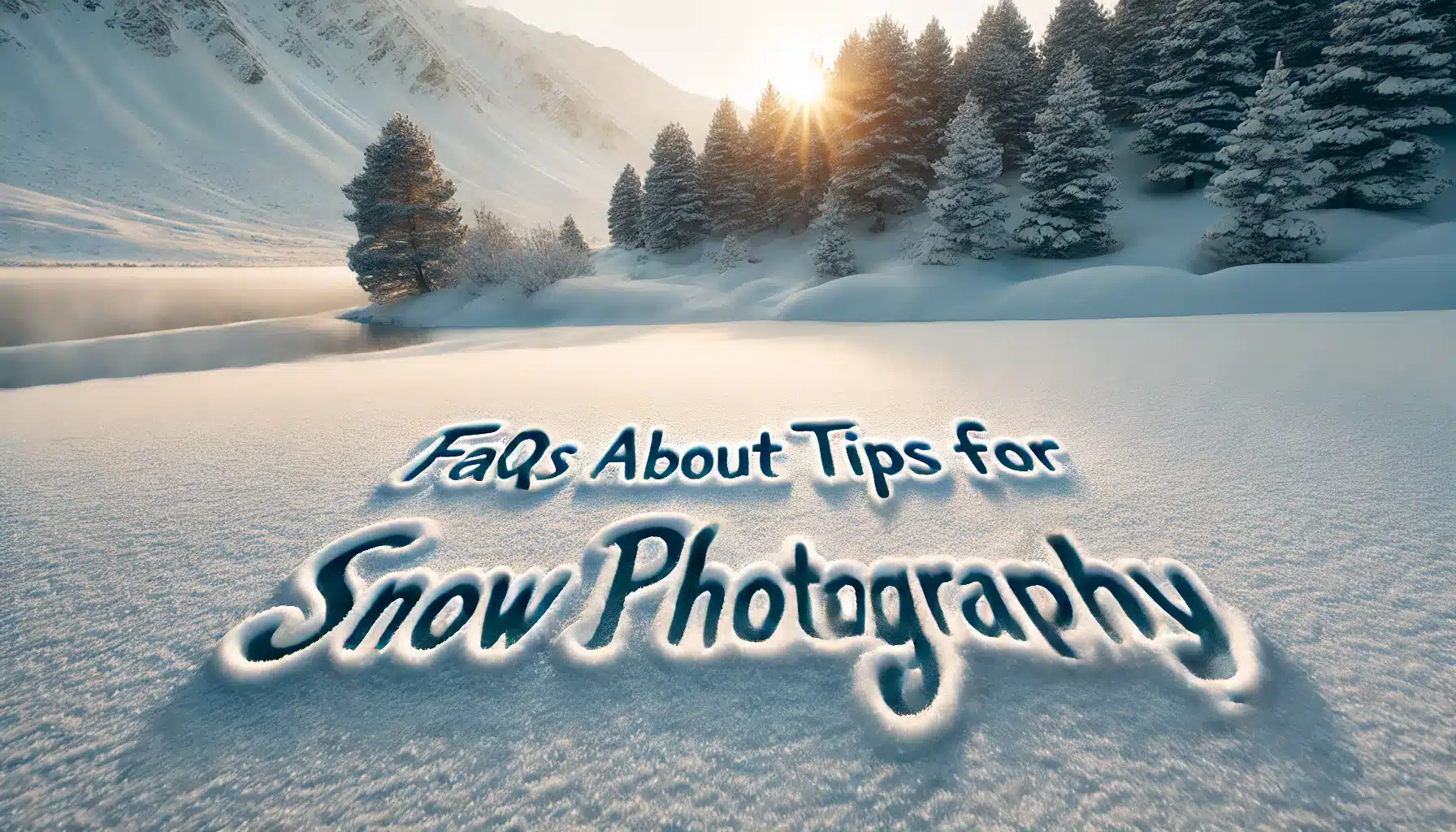
FAQs About Tips for Snow Photography
Let’s dive into some of the frequently asked questions about snowfall photography tips. These answers will provide you with the knowledge you need to take stunning winter shots.
How to take good pictures in the snow?
To take good photographs in the snow, start by using a low ISO setting to reduce noise. Use exposure compensation to prevent the snow from looking too dark. Consider a polarizing filter to manage reflections and enhance colors. Shoot during the early morning or late afternoon for soft, golden light. Fix composition by including natural elements like trees or mountains. Ensure your supplies are protected from moisture and always have extra batteries.
What camera setting is best for snow?
For wintertime imagery, set your camera to a low ISO, around 100 or 200, to reduce noise. Use exposure compensation, typically +1 or +2, to brighten and reveal details. A small aperture, like f/8 or f/11, will put everything in focal range for landscapes. Use manual focal setting to ensure sharpness, as autofocus can struggle with the snow.
What is the best color for snow photography?
The ideal colors to incorporate in wintertime imagery are tones like red, orange, and yellow. These colors stand out against the white snow and add vibrancy to your photographs. You can also use colorful accessories or clothing on subjects to produce a striking contrast with the snow.
What filter is best for snow photography?
A polarizing filter is highly effective for frozen vistas. It reduces glare, enhances colors, and makes the sky appear richer. A neutral density (ND) filter is also useful, especially for long exposures, as it prevents overexposure. These filters help manage lighting situations and bring out the most amazing in your winter shots.
Conclusion
Snow offers endless possibilities for stunning photography. When I first tried snow photography, I struggled with exposure and color. By learning a few tips for snow photography, I improved my shots and captured beautiful winter scenes.
Remember to protect your supplies, use the right settings, and be creative with compositions. If you want to learn more snowfall photography ideas, check out our Photoshop Course and Lightroom Course. They can help you take your photographs to the next level.
Have a nice photoshoot!
Learn more about Photography Techniques:




